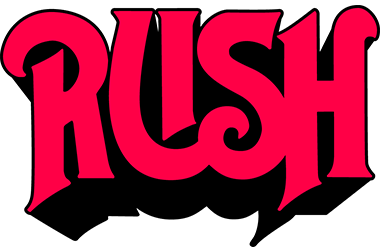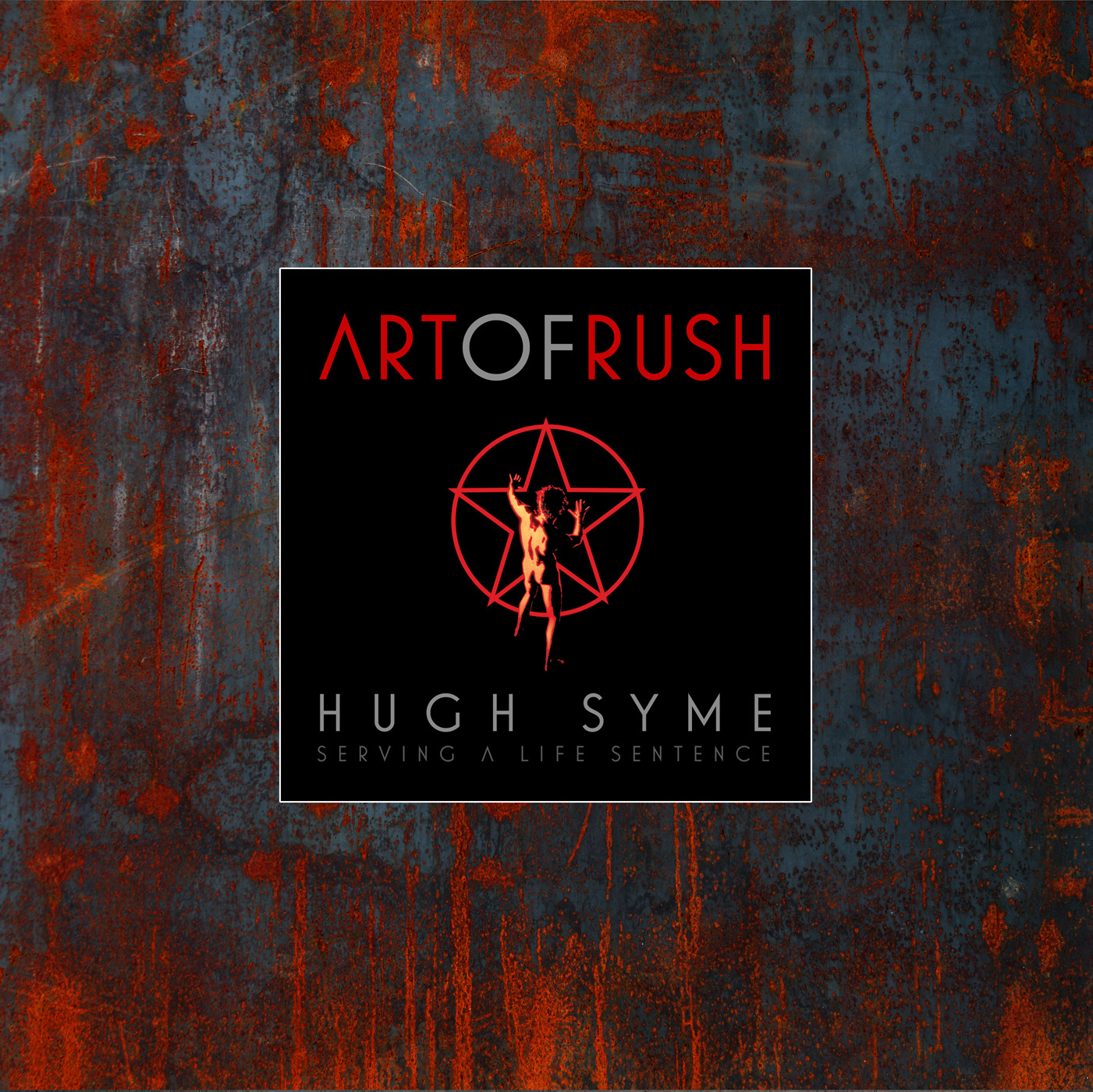
|
Interviewed by John Patuto Special Thanks to Laura McGregor Andy Wilson Mario Patuto Kelly Moretta Kimmel Darren Michaloski |
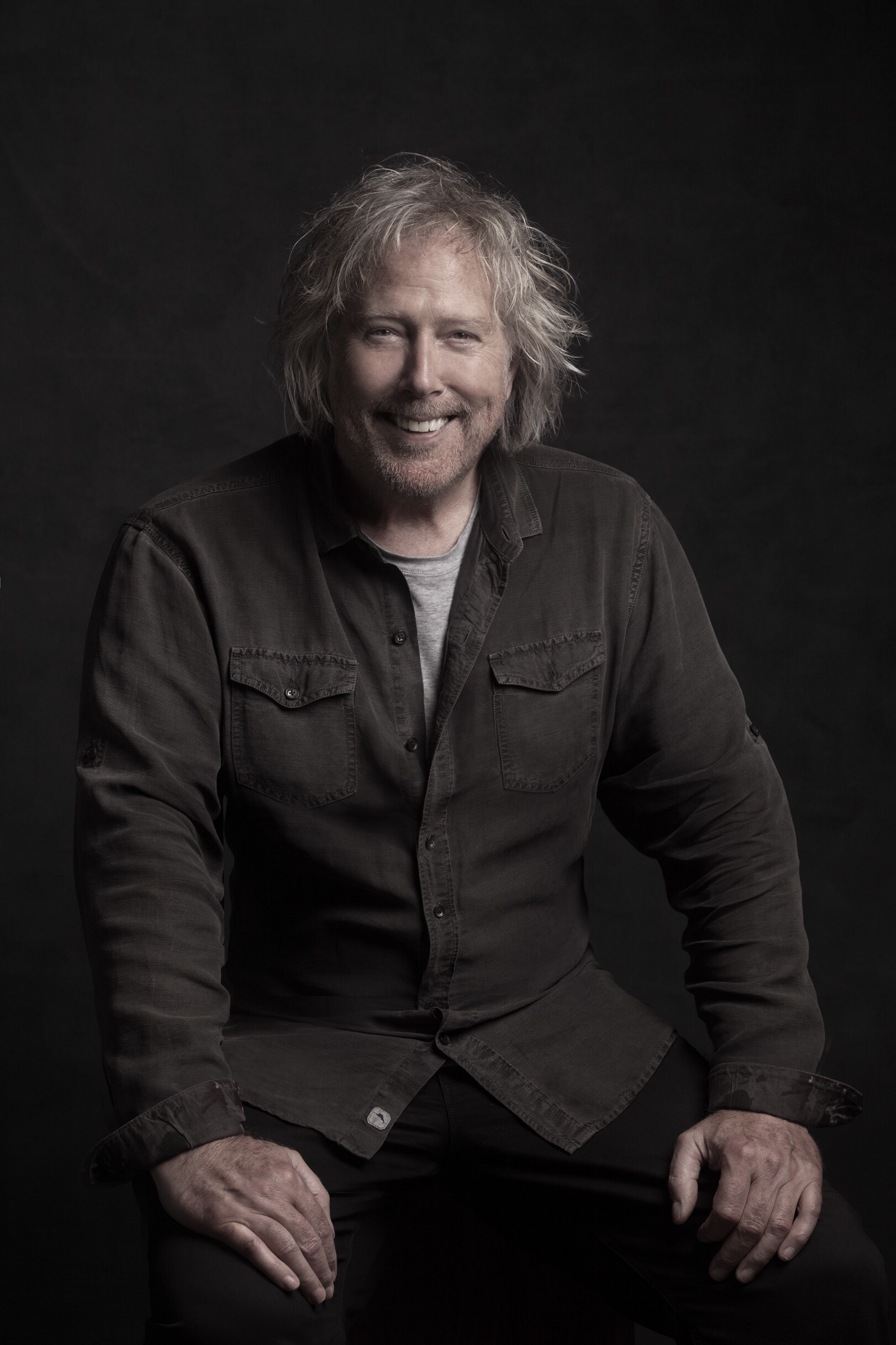
In March of 2015, as Rush were preparing to launch their 40th Anniversary Tour, the band’s longtime artist and illustrator Hugh Syme had just released an amazing 272 page coffee table book that delved into the artwork behind nearly every Rush album. The stunning book began with a foreword penned by Neil Peart, and contained original illustrations, paintings, photography, and the incredible stories behind each album that Hugh has designed with the band since 1975. The book's narration was written by music journalist Stephen Humphries and includes in-depth interviews with Hugh as well as each Rush band member. The Art of Rush: Serving A Life Sentence also contains entertaining anecdotes and commentary from a wide array of notable musicians, actors, athletes, writers, radio personalities and Rush insiders about their favorite Rush album covers, which clearly reveals how vital and impactful the visual representation of their music has been through the years.
Now, six years later, Hugh and IDW Publishing are releasing an expanded edition of The Art of Rush featuring 24 new pages of artwork that center around Rush’s collection of 40th Anniversary Box Sets which began with 2112 and continued through Moving Pictures. To help celebrate the launch of the expanded edition of his book, I had the privilege of sitting down and chatting with Hugh. We discussed his history with Rush and other bands, his approach to designing the artwork for an album, how the landscape of the music business has changed over the decades, and much more.
Our conversation began on a reflective note as Hugh reminisced about working face to face with the band, as it used to be before the digital world became our new reality…
"...It's one of the aspects of what we do with clients, and I stress these are guys that I go way back with. These are my oldest and dearest clients were talking about, and friends. Friends in the sense that before we were in this faceless realm of websites and uploading JPEGs for approval, and then delivering the job as high rez uploads, you know, the days where I would visit the studio in Morin Heights, or wherever they were, the face to face was obviously, much preferable. And it also led to the band saying 'Hey, do you want to play on this track?' I think that would never have happened if I was just talking on the phone." Webmaster's note: Hugh played on 2112; ARP synthesizer intro to "2112: Overture" and Mellotron and ARP Odyssey on "Tears". He also played on Permanent Waves; piano on "Different Strings" and Moving Pictures; synthesizers on "Witch Hunt".
As a self-proclaimed workaholic, Hugh looked back at his beginnings with Rush and admitted that a little bit of luck and good timing never hurt when you’re chasing your dreams…
"...I was grateful to be doing something this much fun, as the initial part of my aspirations was being an album cover designer. It was really on the strength of my being in a band on the same label as Rush, and Max Webster, and Larry Gowan and so on. We were all managed by the same guy, Ray Danniels. I remember distinctly being called into his office like a school kid, to the principal, even though he was my junior. And like a whiz kid, he was managing Rush at 16, I believe. He called me into his office to ask if I would like to do a Rush album cover. And I remember thinking, well, they're not Supertramp or Genesis, but yea we'll give them a shot, you know? [laughs] To this day students ask, 'How do I get to do what you do?' And I point out 'Well, just be lucky enough to be in a band on the same label as an assumed-to-be supergroup. There you go...' And, I don't mean that to be a glib comeback, it really was the springboard and the launching pad of what I do. That, and I've been a workaholic and I've worked really hard at what I do and I'm enjoying it immensely."
We also touched upon the connection to the band and the synergistic nature of the relationship that has always existed…
"...But I had no clue that, like yourself, when you are guilty by association, which we are. I tell my kids who sometimes get a little ahead of themselves thinking about fame, and I think it's more infamy than fame, the fact that you are working with a band, whether it's Rush or Aerosmith or whatever, they're out there promoting themselves but unwittingly and, just as effectively, they are publishing my work, you know, in Tokyo or Brazil. So it was years into my career when I realized that a lot of that visibility was kind of resident in what I do. I've never cared about that stuff until it became evident to me that that was sort of important..."
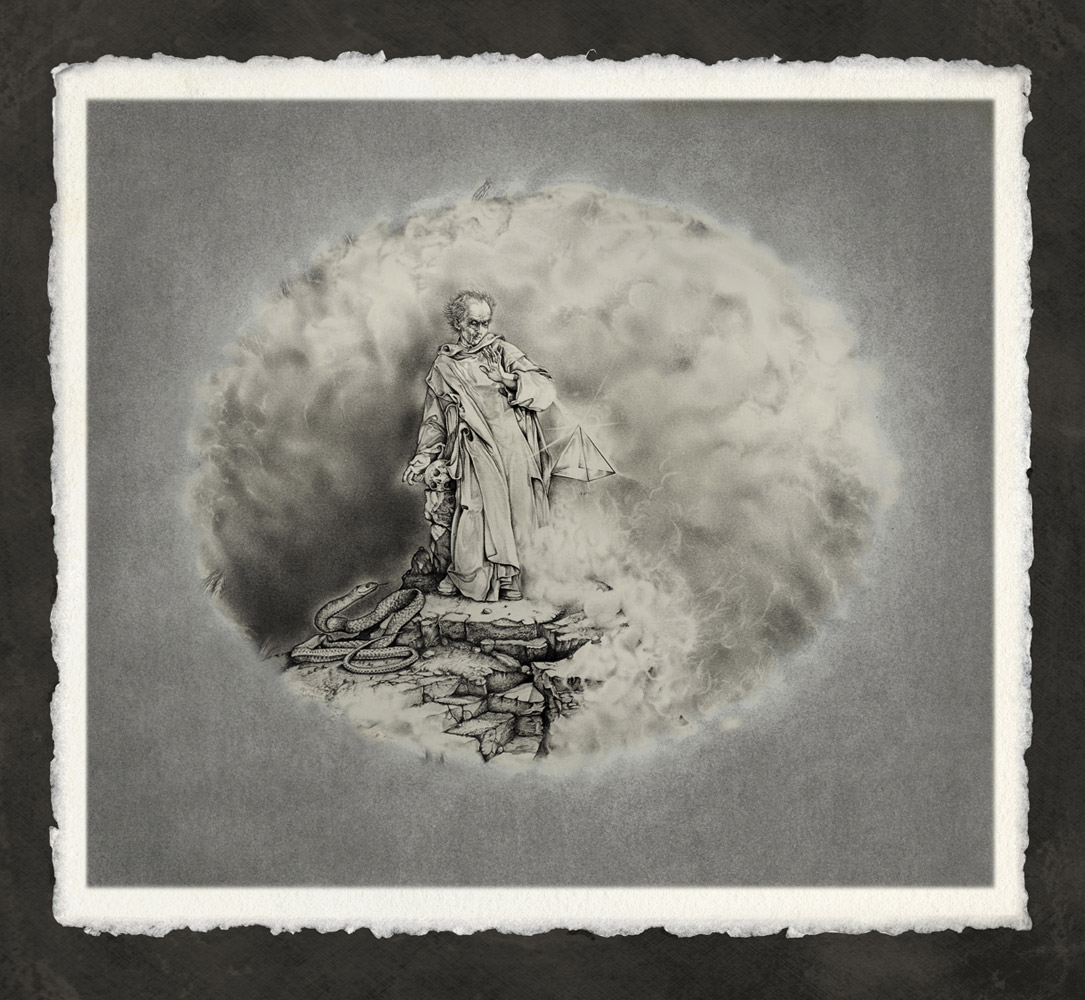 It's been a long journey for you, working with Rush as well as many other artists, all this time. You must pinch yourself in the morning when you look back at your journey and realize the impact your artwork has had.
It's been a long journey for you, working with Rush as well as many other artists, all this time. You must pinch yourself in the morning when you look back at your journey and realize the impact your artwork has had.
"...Not daily, no. [laughs] Every once in a while I do. Certainly during the process of being as fortunate as I was, it wasn't just a question of being with a band that that was gaining notoriety and becoming, you know, a cult following kind of band and a BIG band. It was that I was so fortunate to be working with the likes of these guys. These were creative guys. These were guys that did, to Neil's credo, deviate from the norm. They even surprised me, and the fact that we could enjoy humor so early, and they would embrace some of my glib ideas for some of Neil's always remarkable titles. He's been my favorite person to offer up these brilliant titles like Signals and Moving Pictures and Hold Your Fire. I mean, not many bands are as consistent as Neil was with his wordsmithing."
"...He was a man of words, in all respects, whether lyrics or as the author that he was, as well. But the freedoms they afforded me were just ridiculous and much appreciated by me, because they wanted that same freedom from the record labels. They didn't want A&R people in their recording studios any more than they wanted anyone talking to me, which was unheard of."
With that said, was the artwork collaboration typically between just yourself and Neil, or was the entire band involved as well?
"...That emerged as the obvious collaboration because Neil was the man behind the themes, you know, the music. That became apparent as they all got together as musicians, of course, because Neil was the drummer, but as a lot of the music was being developed, and the melodies were being developed, and based on several drafts of lyrics; lyrics that contained the arc and the theme. Neil and I ... we just enjoyed words. We both enjoyed words, we both enjoyed his letters to me, in the days of faxes prior to emails, that were always properly formatted with indentation and so on. He used to love writing letters, and so did I. So, we clicked immediately and we both came from having lived in St. Catharines for a few years, literally eight miles from his hometown of Port Dalhousie. So my schoolmate, and there's so many aspects of six degrees here, my classmate in grade four was this show off baseball player, and someday-to-be a dear friend of mine who was also Neil's drum tech, Larry Allen. We didn't possibly know that all of this was coming our way. Another good friend of mine ended up being my cheap hire for the bare-assed Starman and the man in the bowler hat [laughs]. We all came from the same Niagara region. So it was cool. "
Amazingly small world, isn't it? To have made all of those connections early on in life.
Yeah. It definitely is.
The second, expanded edition of the Art of Rush will be coming out in mid-October. However, before we chat about the changes in the new edition, can you take us back to the process of putting the book together, and how it felt to revisit all of the artwork that you had produced for Rush over the past four decades?
"...Well, I mean, I'd be misrepresenting the truth if I said it never occurred to me to do a book. But I always thought that that would come someday, you know, we all put these things off. And maybe after we retired, not expecting that the day would come, that Rush would want to load on up and choose to retire. Now fueled by everything from just being at the top of your game and pushing the boundaries of musicianship that really did demand that you keep the physicality of a 40 year old or maybe a 50 year old, because all of Neil's parts, you know, it was physically taxing. Once you hit 60, and continue to expect the same from yourself as you were putting out 30 years prior is, it's a reality check for everybody. And it was also naturally a disappointment for everybody. When they announced that they would retire I thought, 'Well, that was a fun 40-some years...' And little did I know that we were going to be doing commemorative box sets, which we can talk to if you'd like to later, but those were the gift that kept on giving, which I've been enjoying. They're even more elaborate and indulgent than any studio album ever was. So as an art director, I can't complain."
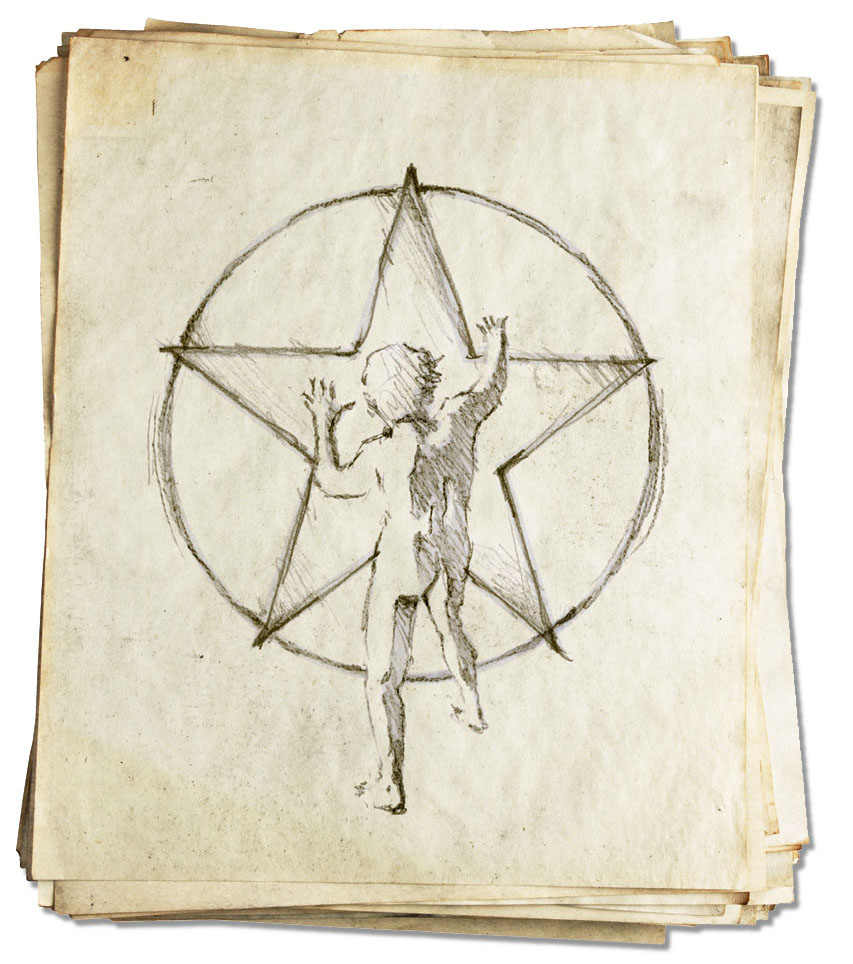 "...Yeah, the process of the book was that I knew I had done a lot of work, and I knew it was sort of archived, you know, and available for that presentation someday. Because I took my daughter's to a Rush concert, eventually they were old enough to go, and we went together and they noticed all the people wearing my artwork. It was in the summer so there were bare shoulders with Starman on them. And there was all kinds of tattoos that were evidently a devoted Rush fan's ink. So, on the strength of that, they just badgered me and I say badgered me in the sense that all three of my daughters would send me at least one text message, sometimes two, asking me how the book is going, even before I even started the process."
"...Yeah, the process of the book was that I knew I had done a lot of work, and I knew it was sort of archived, you know, and available for that presentation someday. Because I took my daughter's to a Rush concert, eventually they were old enough to go, and we went together and they noticed all the people wearing my artwork. It was in the summer so there were bare shoulders with Starman on them. And there was all kinds of tattoos that were evidently a devoted Rush fan's ink. So, on the strength of that, they just badgered me and I say badgered me in the sense that all three of my daughters would send me at least one text message, sometimes two, asking me how the book is going, even before I even started the process."
"...I did some digging, and I asked Neil at the time how I should go about it and if he knew of anybody that would be a great person to collaborate with. I didn't want to tell my own story; that seemed a little unseemly and self-serving. So I wanted to be a third person in that prose. So Neil suggested Matt Scannell from Vertical Horizon and that was actually instrumental. I eventually flew out and met with Matt and Neil. I had met Matt years prior because I was slated for doing one of their covers before it went in-the house at RCA that year. But we got along really well and stayed in touch. He was the interviewer in Neil's man cave and I stress man cave. It was an incredible; 12 car garage with a beautiful sitting area and 18 year old Macallan scotch front and center. You know, it was a lovely afternoon [laughs]. So Matt had his questions prepared, and we roll tape and Neil and I reminisce for about four hours."
"...You know, cover by cover, we would just review everything that we could recall. And so the book was like pulling teeth at the beginning because, as I say, my daughters had to coerce and badger and I eventually just thought, 'You know, I gotta codify all this work. I've got to organize it...' So Matt said I should talk to Stephen Humphries who is one of the most respected music journalists in the business. People like Robert Plant and Steven Wilson, almost exclusively want Stephen
to interview them, so his credentials preceded him. I ended up finding out how big a Rush fan he was as well. So he knew more than me, as I presume you do, about the band. I mean, a true fan is a devoted and curious individual. I maybe took them for granted because they were just friends, you know? And I didn't really delve into all the personal aspects of their life. So Steven generously did the foreword for the book. And it eventually evolved into a book. It was finally ready to go to press. And so it did. And it was very well received to the point that it had sold out."
"...We hesitate to call the next incarnation of the book, the 'Second Edition', even the publisher doesn't want to call it that, because that implies that it's the same volume just reprinted and released as the second edition when, in fact, it's the core book, yes, but there's an addendum at the end with 24 new pages. Speaking of those 40th anniversary box sets, which we started about six or seven years ago, with 2112. That gave me a platform and fresh canvases and fresh opportunity to go back and look at...I'm almost ashamed to admit sometimes for the first time, sometimes re-familiarizing myself with Neil's lyrics. Because I always knew he was wonderful with words, especially later on, when he started being more personal and more in touch with his own emotions, and a little bit less inclined to sort of do an epic, like the 2112 Saga. But reading those lyrics, they brought a lot of new imagery and reminded me of imagery that I had long forgotten. And with fresh eyes, I was able to harvest some visual concepts from those lyrics. And because these were box sets and going to have 40 page hardcover books, and lots of lots of blank pages to fill with art, the self-serving artists that I am or art director that I am, embrace the opportunity to do new art for each title. So that started the tradition with 2112. And it's continued until now. We're sitting on the unpublished Moving Pictures, which I believe is coming out after the new year."
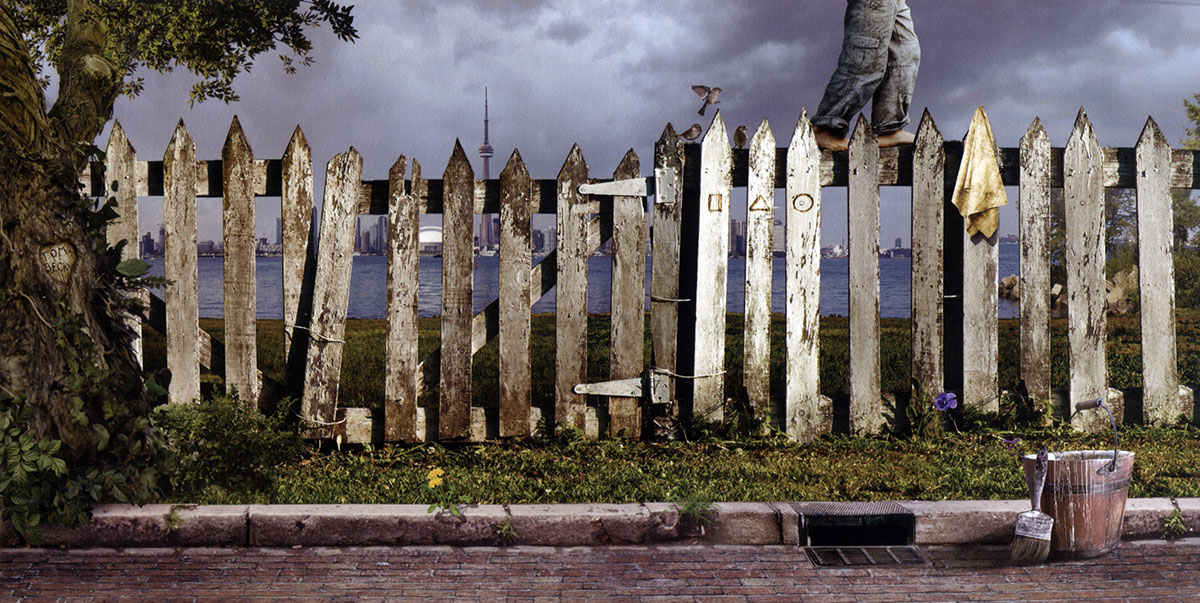 Moving Picture's 40th Anniversary Box Set hasn't been officially announced yet, however based on the artwork that we've seen in the Art of Rush, and some recent comments made by Alex, there are a lot of Rush fans anxiously awaiting its release, or at least an announcement with some details. After all, Rush fans are an impatient bunch! [laughs]
Moving Picture's 40th Anniversary Box Set hasn't been officially announced yet, however based on the artwork that we've seen in the Art of Rush, and some recent comments made by Alex, there are a lot of Rush fans anxiously awaiting its release, or at least an announcement with some details. After all, Rush fans are an impatient bunch! [laughs]
"...There's a few pandemic related issues that just kind of eclipsed the possibility of getting this ready in that sweet spot that we in the industry come to know, as pre-Christmas sales; having everything ready by October is the ideal whether you're in the record industry, or the toy market, or whatever. It's all predicated on being available early. I mean, evidenced by the fact that I think there were Halloween displays in stores three months ago, you know? [laughs] The pandemic has impacted everything that we have all done in this last year and a half, two years and inclusive of the house that I'm trying to build. It took eight months to get my windows, for instance. [laughs]"
Regarding the box sets; did you find it a daunting task to come up with new artwork that paid homage to the original album artwork, given how deeply ingrained it is within the Rush community? How did you balance honoring the artwork from the original album while expanding it to celebrate the 40th anniversary releases? Was that a challenge in and of itself?
"...No, I think it would have been more of a challenge if I tried to make everything dovetail and then find its genesis with the original art. But to that pretty astute question, I also embraced it again, in a very selfish way to say, 'Well, I'm bringing a skill set that's now 40 years hence to the party, and I'm also bringing a visual acuity that that I hope has evolved enough for me to treat each lyric as its own entity.' And I think that's more interesting for the viewer, whether it's a fan or just, you know, a passive viewer. But I think having even the box set covers entirely unrelated to the original...I mean, if you look at A Farewell to Kings; it's quite different than the original piece. And the same with 2112. It was my intention that they'd be brand new, for a couple of reasons. First I felt the need to embrace this opportunity and to do something new and to celebrate the 'then' with the 'now'. Also, if you're not careful, and you make things too homogenous, it starts to feel a little bit like another release or a re-release, and there's enough of that in the music industry where you have cash grabs, and people repackaging existing product. Or maybe re-mixing it, which I guess is a fair place to start if there's a remix. Even I bought Beatle projects that were remixed, because they're pretty cool [laughs].
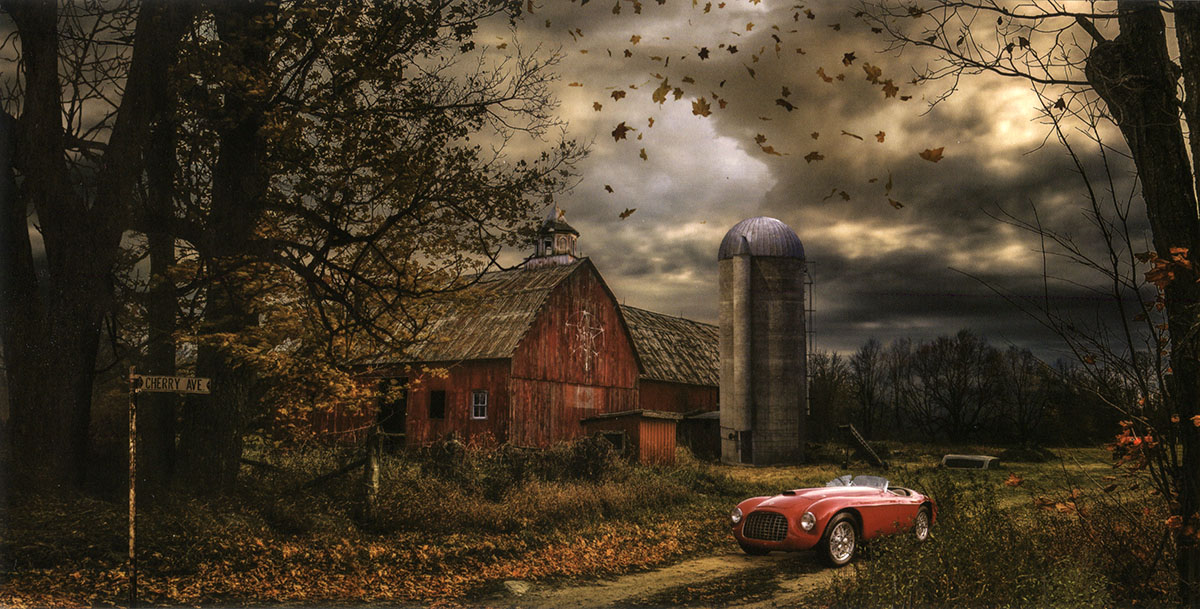 The included artwork in the expanded edition of the Art of Rush related to the forthcoming Moving Pictures box set is really impressive. As 'Red Barchetta' is a personal favorite of mine, I was thrilled to see the imagery you created for that particular song. Was that one of the easier songs to create artwork for, given how illustrative and concise the lyrics are?
The included artwork in the expanded edition of the Art of Rush related to the forthcoming Moving Pictures box set is really impressive. As 'Red Barchetta' is a personal favorite of mine, I was thrilled to see the imagery you created for that particular song. Was that one of the easier songs to create artwork for, given how illustrative and concise the lyrics are?
"...The song and the fact that Neil and I would speak about the fact that his uncle had a sports car in his barn, you know, I don't believe it was a red Barchetta [laughs], but it was at a barn, and it was on Cherry Street. You kind of accumulate the data that speaks to the possible details that can be represented in the image, and that sort of where you start. I've always sort of lived in that sort of improbable reality space. This one's a bit more likely. The lighting time of day, the weather. I've always been a big fan of heavy weather in my work, so I brought that to bear. That, and seasonal change is always kind of poignant. So yeah, that just really breathes life into what I thought would be the right way to depict this one.
So why don't we switch gears for a moment. Back in November of 2019, you opened up an art exhibit in Indianapolis and then you followed that event up this past June with another exhibit in Austin. How did those go? Do you have any plans on hosting additional art exhibits in the future?
"...Yeah, every artist would like to consider that their work is worthy of walls. And, you know, we get so busy, and gratefully I have been so busy that I haven't really been able to stop long enough to consider that, much like a book. It's not something you just kind of say, 'Hey, here's my files, have fun...' You still want to go in and clean up perhaps, and retouch and just re-inspect your artwork, because it's going to be blown up to 18" by 36" or 20" by 40". Especially in the cases of things like Test for Echo, which were double page spreads. So, it's also kind of, I guess, fear of rejection, you know? [laughs] You know that the moment you step up and have an opening night at a gallery, is it going to be tumbleweed and crickets, or is it very well attended? Well, gratefully, both were well attended. And yes, this late in my career, it seems a little bit silly that I waited this long to do gallery shows but on the strength of that I've been talking to the people at Mr. Musichead in LA, Sam Milgrom. And also the Liss Gallery in Toronto and over in London, the Snap Galleries. "
"...So then I'm also on Instagram, thanks to Andy Wilson from Elevate Services. He's also pulled me out of my hermitage, just to be a bit more evident in the social media world, which is something I don't naturally do and I wouldn't have done on my own. He's helped me to realize the importance of doing that. So, again, I've come to that party quite late. And it's led to some interesting projects just because I'm more available. It also led to other cities saying, 'When you come to Seattle, I'll tell you which galleries you need to be showing in...' So the connections are being made. And the inspiration of doing it, because when you go to a show, especially if it's coupled with a book signing, which the show in Indianapolis was, I would never have dreamt that what I had planned to be sort of a 90 minute book signing would turn into a four hour book signing! Even in Austin, Texas, at the Ao5 Gallery with Todd Gresley, he talked about selling tickets and that embarrassed me. I said 'Why would you do that?' And he said, 'Well, I want the people who come to be serious collectors.' Well, it's sold out. And, again, naturally, I'm privately delighted that that happened. And it was really well attended. And we were there for a couple of days and, you know, wall to wall people and a great response to the show. "
"...So, yeah, I think it's kind of a new frontier. For me, I stay busy. And then I'm still being productive all the time. Whether I'm working for a client, like a Dream Theater, or Joe Bonamassa, which was the most recent one I've done, I still can't stop doing what I do. So I continue to make images for myself as well. So for my own, needs to be productive. So they eventually find a home in a gallery, it seems [laughs]."
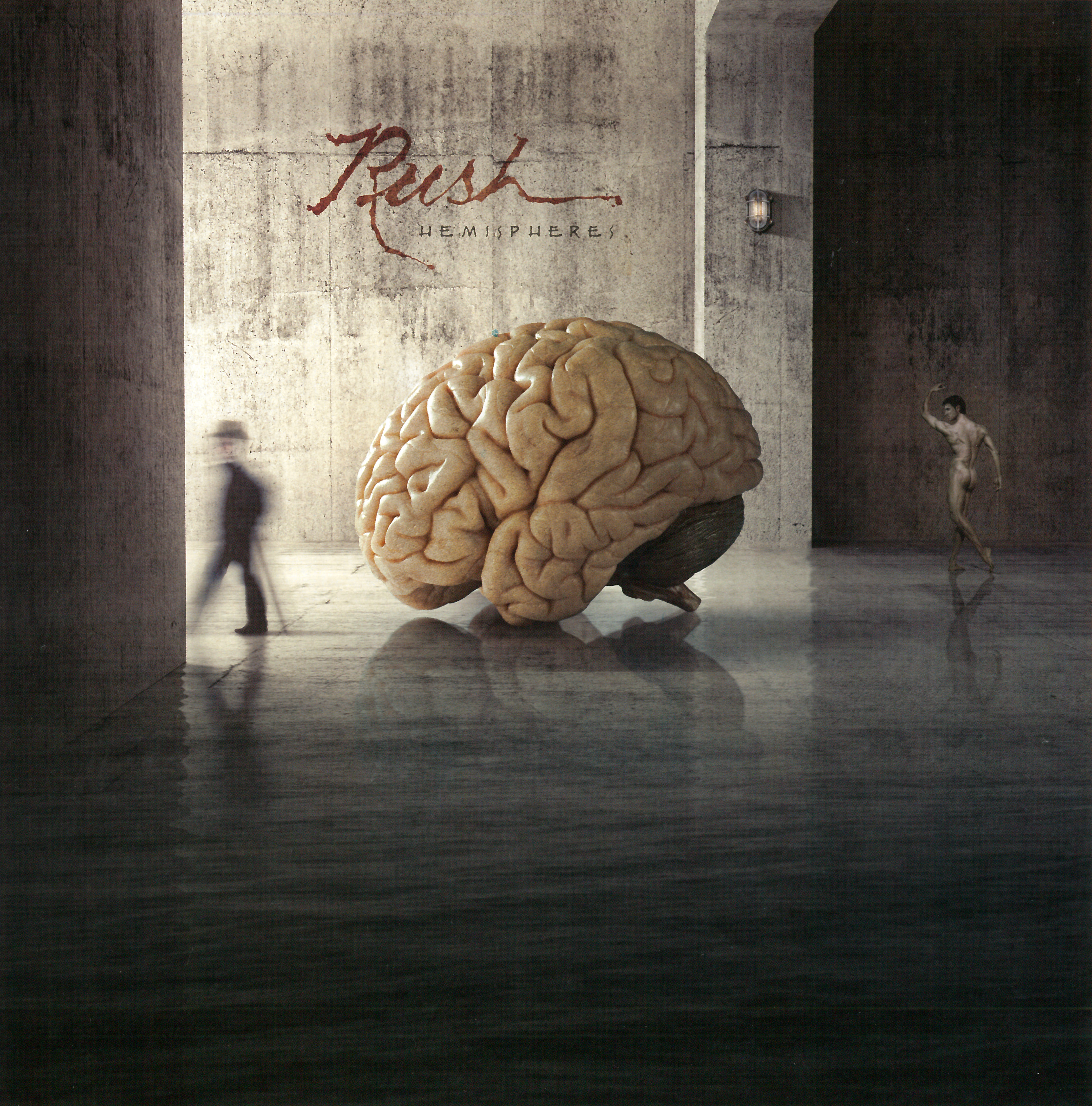 I wish you luck on any future art exhibits. Selfishly, I hope you'll come around the eastern seaboard of the United States where I'm located for your next exhibit...
I wish you luck on any future art exhibits. Selfishly, I hope you'll come around the eastern seaboard of the United States where I'm located for your next exhibit...
That's the thing. I mean, and I'm not saying this on the strength of this being a public interview, but I don't research those places. I do know about major music centric galleries like Sam Milgrom's Mr. Musichead. I mean, it's a pretty legendary place. And Brian Liss in Toronto; he's got completely music and art and photography related clients. They show people, not just people like myself, you know, album cover designers, but they have paintings by McCartney or Bob Dylan, or Ronnie Wood; all these people that are really good artists. And you think 'Oh, my God, stick to the music, guys!' And then you see the art, you realize, wow, these guys, these are really quite prolific and capable painters! These guys find homes for their art, so all the more reason for me to say, 'Yeah, let's keep going...' And I couldn't ask for a better company. Think about it, right?"
You mentioned Test for Echo earlier which brings a question to mind. When I look back at the evolution of the art direction for Rush's catalog of studio albums, there was a turning point with the release of that album in that you produced artwork for each individual song; a pattern that would largely continue for the rest of Rush's studio albums. Was that a conscious decision on your part, or did Neil and/or the band decide to expand the artwork in that fashion?
"...The way I answer another question that a lot of interviewers asked me when they say 'Well, you must have felt really, really deflated when they took the 12 inch square away from you and then relegated all your art to the four and three quarter inch CD booklet.' And I thought yeah, it was a challenge. You have to think with some degree of minimalism and you have to kind of truncate your expectations for that big canvas at 12 and three eighths inch square that was the LP which, by the way is completely current again and every project I do has to have artwork that suits that format because vinyl is now finally the premier selling medium. But I often say that when that door closed, other multiple windows were open because that opened, in the case of my clients who didn't have 8-page CD booklets because they had 24-page CD booklets; they had 40-page CD booklets. Once again, I'm faced with all these blank canvases and I'm thinking 'What to do?' Well, that was my new opportunity and my new task which was to create imagery, eye candy, for lack of a better term, that's entertaining and engaging and alludes to the lyric content and somehow feels appropriate either under or adjacent to that lyric."
"...So yeah, and also Dave Mustaine came to me during my project with him called Youthanasia and I think he might have preceded Test for Echo. He was the one that went to Tommy Steele, who was the art director at Capitol in LA and Tommy called me and said, 'Well get this. Dave wants art for every song.' And I said, 'Oh, God, really? You know, that's going to be like doing eleven album covers!' One of the pragmatic questions is first of all, are we good for this? He said, 'Yes, it's not my problem..." [laughs] And this is a band that also hired Richard Avedon to do their photography. This was back well prior to the days that we're in now where we're feeding off the carcass of what used to be the music business. This was back when people had obscene amounts of money and also aspirations were big. You had to be big; you had to be evident at video, you had to be evident on the racks in the stores, and so on. And then you just have the indulgence of the artists themselves, they just want, they just want. I won't say it's gimme, gimme want, but they aspire to be as good as or better than their peers. So they went to the mat on all of those projects. So when I got that call from Tommy, it did kind of spark my, maybe even unwittingly at the time, because I didn't anticipate it would become the template for everything I did for Rush thereafter, and Dream Theater and any other band that, you know, had the wherewithal, and that's another thing. It's not for the faint of heart to say, 'Yeah, we've got eleven songs, can you do artwork for every song?' Well, I can, I'd love to, and then then comes at unseemly collision of art and commerce, when you have to kind of decide if you really want alloy wheels? And can you live without air conditioning? Or do you cherry pick which songs in those instances that you want to feature?"
Absolutely. And it must be rewarding, with the 40th anniversary box sets, to have the opportunity to go back and create artwork for each of the songs; artwork that obviously wasn't available with the original release of the album.
Yeah, and that's the obvious observation. But the better one is that it's with a band that I hold so dear, so it's not just going back and filling space. It's also enjoying the opportunity to do justice to and again, as I said, very early in this conversation, to refamiliarize myself, and in some instances completely familiarize myself for the first time, because a lot of my work is derived from just the album title. You know, when Neil gave me title for Moving Pictures, I immediately knew what that cover was going to look like in that instance. But I didn't know in the case of Permanent Waves; that took a few different iterations of concept before we arrived at the kitsch thing that we did on that album cover. "
Is that what you typically would receive from Neil or the band; just the title of the album?
"...Yeah, a true Rush fan will know the illustrated lyrics of Neil Peart. He always liked to illustrate his own lyrics and he would render the title. I am very proud to be the owner of a few originals of those. A lot of them, they were faxed to me or they were mailed to me by FedEx, and I would open them up and I would read them, and that was a deeper dive into their concepts than just the title. But in the case of Moving Pictures or Permanent Waves, or even the album that they recorded in Wales, A Farewell to Kings; sending me a title was really, and I say this to all late comers that have come to my studio, 'Give me a good title that is more important to me than anything.' And it was true then. A great title is where the fun starts. Sometimes the band wasn't even well enough into the music and finishing and finalizing lyrics. And a lot of times they were just finishing rehearsing and going into the studio, while I was already privy to the title. Sometimes it was sent to me with the proviso that it's the working title, it's the best contender so far. And I would be careful not to get ahead of myself in those instances. But whenever Neil was pretty confident that the title was given, I would then take off and do my thing."
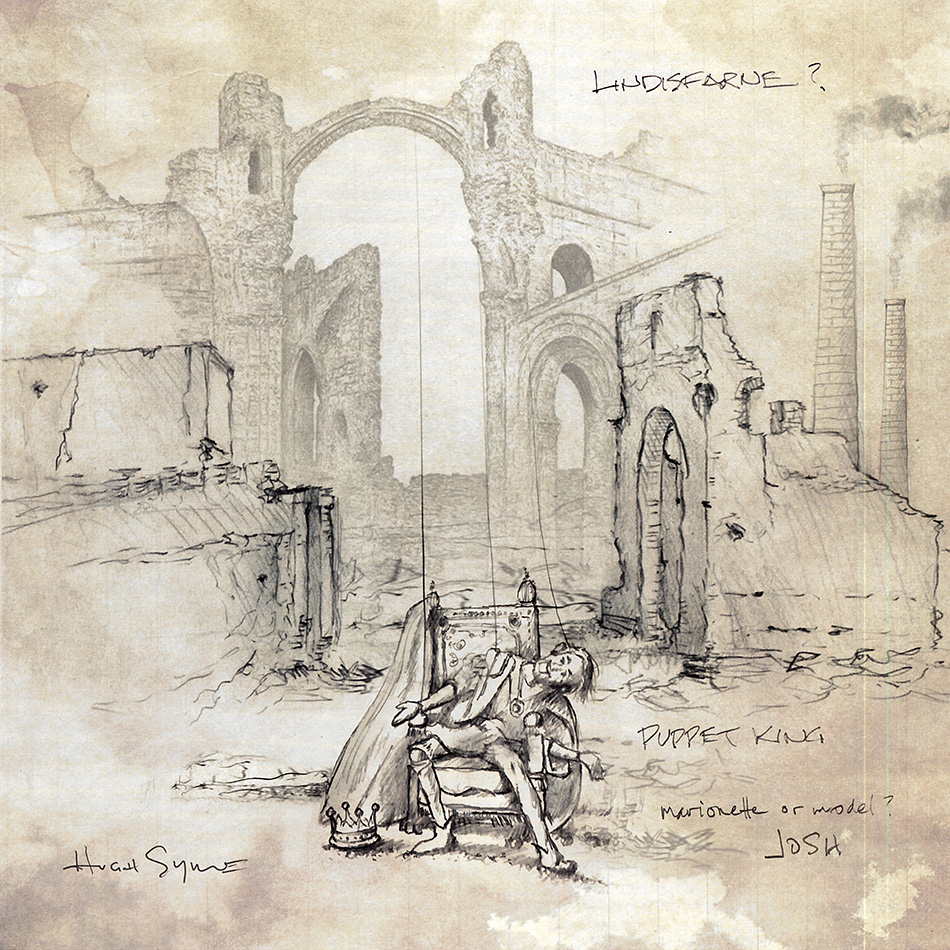 I seem to recall that the working title for A Farewell to Kings was actually Closer to the Heart. Did you get that title as a preliminary one?
I seem to recall that the working title for A Farewell to Kings was actually Closer to the Heart. Did you get that title as a preliminary one?
"...No. Well, if I did, I don't remember. I might have but I think the fact that it became such a profound, big, lighter song, you know, in their concerts. I think that's what I remember more. But it could well have been kind of something that was told to me, but probably cautioned not to take it to heart yet because of the fact that they're still working on it. "
"...You asked a question earlier to which I want to answer; about who I met with to discuss the artwork. It was not always Neil, incidentally. In the early days, it wasn't necessarily anyone and with Moving Pictures, I didn't really meet with anyone, I just blurted out my idea. And it was dead air on the other end of the phone because it wasn't embraced immediately as being, you know... We were still getting to know each other at that point so for me to say 'No, we've got to have men moving pictures in a group of probably European if not Eastern Block people looking forlorn, and horrified as their national treasures were being taken out of their museum. You know, of course, I wanted to go to Europe and photograph all of this in front of the truly classical buildings, but budgets prevailed. I fortunately found a beautiful neoclassical building in Toronto. Unwittingly, I didn't really notice that there were three arches and three pillars, dividing each arch. So that whole triumvirate, that device that alludes to the three members, was kind of born around that time, I think. Looking back, it to that cover was what the power station on Pink Floyd's cover became."
Absolutely, and you know, there are still fans today that seek out that building and take selfies in front of it.
"Oh, I know! [laughs] And they send them to me; I get them, too."
[laughing] That's great. So what's next for you? Are you starting to think ahead of a possible 40th anniversary box set for Signals?
"...Not yet. It's funny, I don't really get too far ahead of myself. I should probably take the pressure off, because when I finally get into it, I'm in the trenches for like, three, four months just jamming to get artwork done. So I should probably pace myself, you know, at my advanced age. I did re-gentrify the miniature that we built for Hold Your Fire. I have a new image, which I'm showing now, that is definitely the same neighborhood, but it's been renovated [laughs]. So it's a pretty cool image. So that's sort of in the in the hopper, it's just waiting to be part of that package. But that was just because I felt like doing that; that was a project that I embraced for my own purposes, forgetting the fact that it might find a home someday and that's probably going to be in that 40th anniversary box set. But I don't get too far ahead of myself. I'm almost overwhelmed with each one as they present themselves. It's intimidating, because you have your own prowess as an art director that fans are now familiar with. It's like anything else, and I'm sure that all musicians feel the same way when they release their music. Are the critics gonna dump on it or are they gonna go 'Wow, great project!'. So I have the same aspirations whether realized or not, I still have to be true to myself and certainly serve my own reputation, but also serve the band's needs."
Well Hugh, I really want to thank you for taking the time to chat with us. The Art of Rush book is a true celebration of your contributions to Rush over the years. I think I speak for all Rush fans that we are truly looking forward to what the future holds for you and these upcoming box sets. So, again, thank you very much.
"Thank you, John. I appreciate that. It's been my pleasure. We'll speak soon-"
The Art Of Rush: Serving A Life Sentence, published by IDW, is hitting shelves everywhere books are sold on October 12th. Order your copy today HERE.
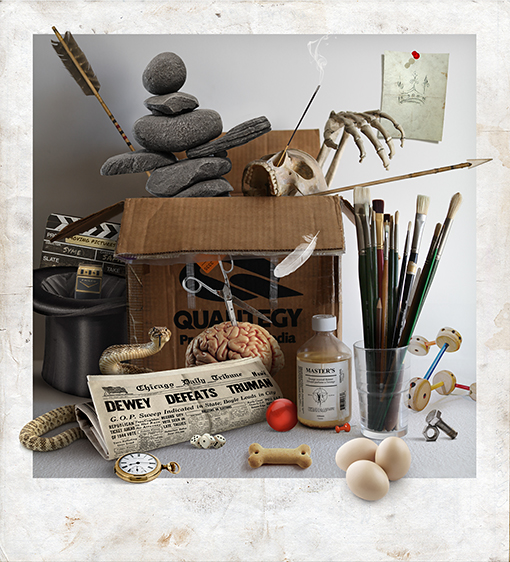
-| Click HERE for more Rush Biographies and Articles |-

